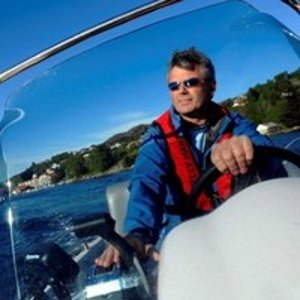Edda Wind - Experts & Thought Leaders
Latest Edda Wind news & announcements
At the Nor-Shipping trade fair, DNV signed a classification contract for four state-of-the-art Commissioning Service Operation Vessels (CSOVs), ordered by Norwegian offshore wind operator Edda Wind. Set to be delivered from Vard yards in Norway and Vietnam the vessels will provide essential support to the burgeoning offshore wind industry. The CSOVs will serve as primary vessels for wind turbine technicians during commissioning and maintenance tasks, offering them support and a secure working environment. The vessels will be prepared for zero-emission operations based on a Liquid Organic Hydrogen Carrier (LOHC) concept in addition to being methanol ready. Author's quote “We are very pleased with the new order from Vard and that we again will have class services provided by DNV," says Kenneth Walland, CEO, of Edda Wind. "The Edda Wind fleet is increasing to fourteen highly advanced offshore wind service vessels by 2026. All vessels are built and operated under DNV-class.” “Together with Edda Wind and DNV we are now following up on our strategies to meet the world growing energy needs in a sustainable way," says Torgeir Haugan, SVP Sales & Marketing in VARD. "Smarter and more sustainable vessels are the top priority for all parties in this project. Together we will create a series of unique and sustainable vessels especially developed to meet the customer’s and regulation’s requirements and needs.” Roll-out of renewable offshore Vessels in this segment are highly specialised, and must operate in demanding environments" “As the energy transition continues to ramp up, support vessels to enable the roll-out of renewable offshore fixed and floating wind turbines will be essential,” said Tuva Flagstad-Andersen, Regional Manager, Region North Europe at DNV. He adds, “Vessels in this segment are highly specialised, and must operate in demanding environments, while delivering operations safely, reliably, and sustainably. At DNV we are very pleased to be able to deepen our cooperation with Edda Wind and Vard and look forward to successful delivery of the vessels.” Vard Electro's SeaQ Integrated Bridge System Exclusively designed for Edda Wind by Vard in Ålesund Norway, two of the CSOVs are scheduled for delivery in Q1 2025 and will be delivered by one of Vard's shipyards in Norway. The other two, scheduled for delivery in Q2 2025 and Q1 2026, will be built and delivered by Vard Vung Tau in Vietnam. The vessels will feature Vard Electro's SeaQ Integrated Bridge System. On board the vessels, there are 101 cabins and common areas available to accommodate 120 persons. To ensure optimal working conditions, anti-heeling and roll reduction systems will be installed, and the vessels are equipped with motion-compensated gangway - and crane systems.
European Union - EU grants the Ship-aH2oy project EUR 15 million in funds to equip an offshore wind vessel with a sustainable and scalable solution for power and heat generation. With 17 partners from 7 European countries, the project aims to introduce high-temperature solid oxide fuel cells (SOFC) and liquid organic hydrogen carrier (LOHC) technology for marine use. In combination with efficient heat integration, this will result in a scalable, safe, and sustainable power and heat generation system on board ships. Realising green maritime operations Edda Wind is a globally renowned and market leading C/SOV operator To demonstrate the technology, a 1 MW hydrogen power system, consisting of a fuel cell module and a hydrogen release unit, is intended to be installed onboard a new service operation vessel (C/SOV). Edda Wind is a globally renowned and market leading C/SOV operator. Their new fleet of C/SOVs for offshore wind operations is all designed with spare room for the future installation of hydrogen power systems up to 3 MW. Ship-aH2oy project “We are thrilled to be a part of Ship-aH2oy and to have the opportunity to demonstrate this cutting-edge technology onboard one of our vessels. With the support from EU and our excellent consortium partners, we are ready to take the next step toward zero-emission maritime operations for offshore wind farms,” says Kenneth Walland, the Chief Executive Officer (CEO) of Edda Wind. At a later stage, the project will also include a replication study for integrating the power system on board a passenger ship operating on coastal waters. The implementation and demonstration will prove that the concept developed during the project is scalable beyond the 3 MW level. Novel hydrogen technology Liquid organic hydrogen carrier (LOHC) adds a new way of handling hydrogen onboard ships in contrast to the established technologies. Instead of using gaseous or liquid hydrogen, hydrogen is chemically bound to a carrier. The carrier chosen in this project is an industrially available thermal oil, benzyl toluene, which can be used to store and transport large amounts of hydrogen within the existing fossil fuel infrastructure. This LOHC solution also significantly increases the safety onboard as the carrier oil is non-explosive. Hydrogen release unit onboard the ship A hydrogen release unit onboard the ship releases the hydrogen from the LOHC into the fuel cell A hydrogen release unit onboard the ship releases the hydrogen from the LOHC into the fuel cell. The waste heat from the SOFC will be recovered for the hydrogen release unit as well as the ship’s heating needs. In this way, a high system efficiency can be achieved. In combination with the safety and handling advantages of LOHC, this makes it a very promising emission-free fuel. Deploying liquid organic hydrogen carrier technology Dr. Caspar Paetz, the Chief Technology Officer (CTO) at Hydrogenious LOHC Technologies, said “The use of liquid organic hydrogen carrier technology in this project is a potential game-changer for the maritime industry’s accelerated transition to clean energy.” He adds, “The LOHC solution applied enables a superior safe and efficient way to store and transport hydrogen, proven in stationary systems. We are thrilled to bring this innovative tech on the water and start testing it as main power for the vessel, demonstrating its capabilities in this groundbreaking project.” Broad partnership with a clear goal The project brings together 17 partners spanning the maritime sector from research, technology, and design to ship builders, owners, and operators. Their joint expertise and strong commitment to realize zero-emission shipping forms the basis of Ship-aH2oy. “This project is a great example of the kind of innovation and collaboration that is needed to bring clean energy solutions to the maritime sector. We are excited to work with our partners to demonstrate the potential of combining high-temperature fuel cells and LOHC technology as a safe and scalable solution for zero-emission shipping,” says Project Coordinator - Jaana Viitakangas, Senior Scientist at VTT. Transition to clean energy solutions in the maritime sector The transition to clean energy solutions in the maritime sector requires bold thinking and collaboration" The European Climate Infrastructure and Environment Executive Agency (CINEA) have funded the project with EUR 15 million over a five-year period. “The transition to clean energy solutions in the maritime sector requires bold thinking and collaboration. Ship-aH2oy is a perfect example of this, as it brings together cutting-edge technology and industry expertise to demonstrate a new technology with great potential. We are excited to see the results of this project and its impact on the maritime industry,” says Project Officer - Vladimir Cid-Bourie at CINEA. Key facts: Ship-aH2oy project Project period: January 2023 to December 2027 Funding: €15 million Partners: VTT, Edda Wind, Østensjø Rederi, Johannes Østensjø DY, Hydrogenious LOHC Maritime, Hydrogenious LOHC Technologies, Friedrich-Alexander-Universität Erlangen-Nürnberg, Siemens Energy, DNV Hellas, Engitec, Demokritos, Gondan, Deltamarin, Teknotherm, ANEK, National Technical University of Athens Highlights: Introduces a safe and efficient way to use hydrogen as fuel for ships in the form of liquid organic hydrogen carrier (LOHC) to achieve zero carbon emissions. Achieves high system efficiency through the combined use of LOHC, high-temperature solid oxide fuel cells (SOFC) and efficient heat integration. Aims to demonstrate the technology on board an existing and available ship, a service operation vessel (C/SOV) for zero-emission offshore wind operations. Includes a replication study for the developed SOFC/LOHC system allowing easy replication in other and larger ships, including ROPAX-vessels.
At the Nor-Shipping trade fair, DNV signed a classification contract for two new Commissioning Service Operation Vessels (CSOVs), ordered by the Norwegian pure-play offshore wind operator Edda Wind. The vessels will be built at Colombo Dockyard in Sri Lanka and are designed for service operations during the commissioning and operation of offshore wind farms and are prepared for hydrogen operations. They are scheduled to be delivered under the Norwegian Flag in January 2024 and July 2024. Next-generation technology Advanced CSOVs that offer both next-generation technology and comfortable accommodation is an important part of the value chain in a booming offshore wind segment that is expected to grow as the demand for renewable energy soars over the coming decade. The planned hydrogen fuel system will be based on the LOHC design by Hydrogenious LOHC Maritime AS The new additions to the Edda Wind fleet will function as mother ships for wind turbine technicians as they perform commissioning and maintenance work on wind turbines, with accommodations for up to 97 technicians and 23 marine crew. The planned hydrogen fuel system will be based on the Liquid Organic Hydrogen Carrier (LOHC) design by Hydrogenious LOHC Maritime AS and prepares the vessels for future zero-emission operations. Purpose-built CSOVs “Ordering these purpose-built CSOVs will further strengthen Edda Wind’s leading position within offshore wind, and we are very pleased to have DNV as our classification partner on this journey,” said Håkon Vevang, Chief Commercial Officer of Edda Wind. “Tremendous growth is expected in the offshore wind market over the next decades, and the move is a clear signal of Edda Wind’s ambition to be a world-leading provider in this segment and our commitment to ensuring that our new builds are environmentally friendly.” Construction of advanced vessels “We are very pleased that Edda Wind has entrusted Colombo Dockyard PLC with the construction of these advanced vessels, and we look forward to working with both Edda Wind as client and DNV as classification partner,” said Thimira S Godakumbura, Chief Operating Officer of Colombo Dockyard PLC. “We are proud to have won a place in these emerging markets and aim to strengthen our position further going forward. This exciting project is certainly an important milestone.” Safety, digitalisation, and comfort CSOVs are among the most technically advanced vessels out there, with high demands on maneouverability" “At DNV we are very pleased to have been chosen as the preferred classification partner for these new builds and we look forward to working closely with all partners,” said Tuva Flagstad-Andersen, Regional Manager, Region North Europe at DNV. “CSOVs are among the most technically advanced vessels out there, with high demands on safety, maneouverability, digitalisation, and comfort. I am confident that our experience in the offshore sector will serve us well in ensuring successful delivery.” Salt 0425 design The two CSOVs will be built to the Salt 0425 design and measure 89.3 meters. They are in principal sister vessels to a DNV-classed new build which is currently in construction at the Spanish shipyard Astilleros Gondán. Some of the key features include anti-heeling and roll reduction systems to provide good working conditions onboard and a motion-compensated gangway system with an adjustable pedestal to ensure safe and optimal connections to the turbines, even in harsh weather conditions.





